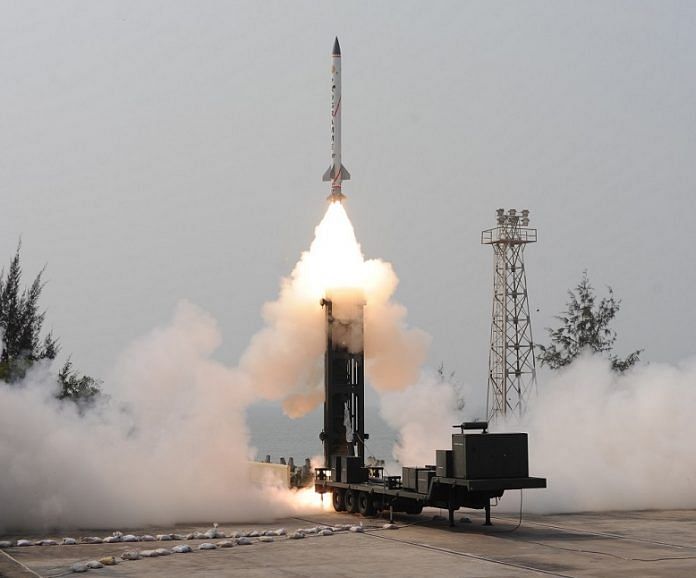Endo-atmospheric test for ballistic missile defence programme scores direct hit.
New Delhi: The indigenous advanced area defence (AAD) test, carried out off the Odisha coast Thursday, scored a direct hit on an incoming target missile, proving India’s growing capability to intercept and neutralise nuclear capable threats.
With the third successful test this year, the desi missile shield — being developed to protect cities such as New Delhi and Mumbai, besides military installations, against incoming aerial threats — is coming of age.
The AAD programme was accorded top priority by the BJP government after it came to power in 2014.
Sources told ThePrint that the endo-atmospheric (at an altitude of 15-25 km) interception followed textbook precision, with all mission objectives being achieved Thursday.
India’s ballistic missile defence (BMD) programme is two-layered, with one missile being designed to take out an incoming nuclear tipped missile outside the atmosphere, at a range of over 80 km.
The fail-safe is a second missile that is being developed to destroy the incoming target at a shorter range, in case the long-range interception does not work.
While the programme had seen hiccups as scientists perfected the art of taking down incoming targets at supersonic speeds, the third success in a year has come as a boost.
Two similar tests were carried out in February and March, in which weapons system radars tracked the target and provided the initial guidance to the interceptor, followed by a hit and destruction of the target.
Creating a credible missile shield for New Delhi and Mumbai has been a priority for the government, which is also purchasing advanced S-400 surface-to-air missile systems from Russia that are designed to take down targets at a range of almost 400 km.
One of the first big projects cleared by the Modi government when it came to power was to set up a $1-billion DRDO facility in Hyderabad to manufacture critical seekers that direct missiles to their targets.
Though the project was initiated by the DRDO with the first test carried out in 2006, it was between 2009 and 2012 that a series of tests were carried out to validate the system. While the plan was to induct the system for the two major cities by 2014, the project had slowed down due to several reasons, including technological roadblocks.
In anticipation of the missile shield to be made functional soon, two long-range radars to track incoming nuclear missiles have already been placed near the national capital region.




Desi means failed.